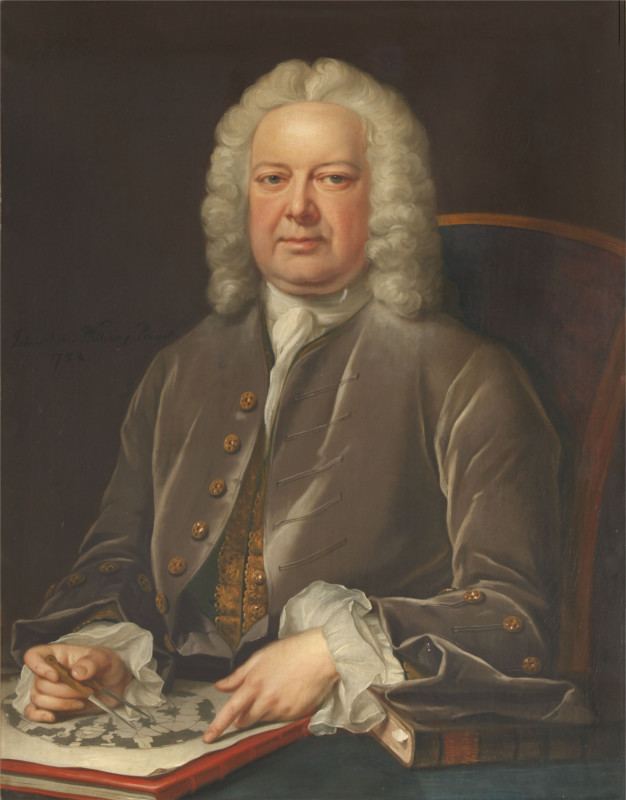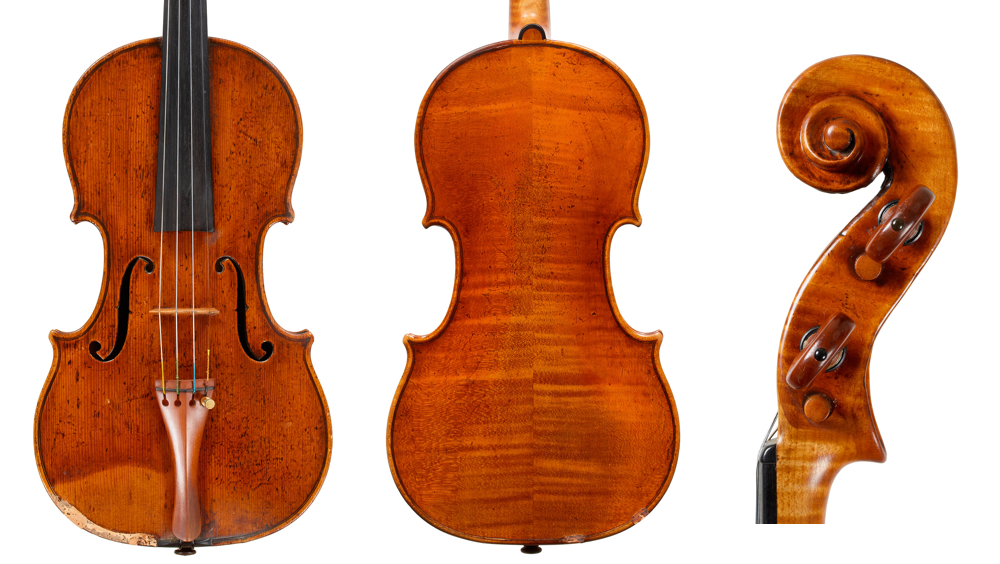Bought from W.E. Hill & Sons by Fritz Kreisler in 1911, the ‘Parker Stradivari’ was made by the great English violin maker Daniel Parker in the early years of the 18th century. Its modeling and construction reflect a solid understanding of certain Stradivarian principles, but it was made by a relatively humble craftsman working 800 miles away in London – perhaps the most successful maker outside Italy to engage with Stradivari’s work during his lifetime.
Although the violin would later be mythologized by Kreisler, the Hills and other aficionados of English violins, Alfred Hill’s diaries for February 8, 1911 provide a candid record of the day when Kreisler came to their Bond Street shop and tried the violin for the first time:
‘Kreisler who was here yesterday and the day before has fallen in love with a Daniel Parker and preferred it to the tone of the Joseph Guarnerius we have recently bought back and belonged to Major Frewin. He played one of his three concertos on it last night at his concert, and Clayton who was present, said he could not detect any difference between the tone of it and his Guarnerius. We know what good fiddles Parkers are from a tone and every other point of view, but to persuade the average violinist to recognise this seems a hopeless task. Kreisler intends to call it a Balestrieri. Certainly there is no one in Germany who would recognise a Parker… We have sold Kreisler the instrument for £50.’
Kreisler’s interest in English violins may have been initiated by the reasons behind his visit to London. He had long been admired in England, where he had toured many times, and in turn he had long been an admirer of Edward Elgar, describing him to an English newspaper in 1907 as the greatest living composer ‘on an equal with my idols, Beethoven and Brahms’. Two years later he had commissioned Elgar to write his violin concerto. He gave the work its premiere in London with Elgar conducting on November 10, 1910, by now playing the 1734 ex Hart (now ‘Kreisler’) Guarneri ‘del Gesù’ as his favored instrument. Triumphant from his English tour and on his way back to Germany, this was surely the moment for the Hills to tempt him with a memento of his sojourn. Whatever the circumstances that induced Kreisler to buy the violin, he kept it for most of his career, finally selling it in 1948.
Kreisler’s frequent jests about re-christening the violin with an Italian attribution have played into its mythology. Kreisler seems to have delighted in fooling musicians and audiences by playing an instrument by an unknown English maker in place of his Guarneri, but his deception appears to have been a mischievous one, reflecting his delight and passion for the violin. Nonetheless in the 1940s when he showed it to Nathan Milstein at a New York party, so the legend goes, it had become the ‘Parker Stradivari’. Anecdotes about the violin appear time after time among the pages of The Strad magazine, which featured the instrument as part of a supplement marking its thousandth issue in April 1973, a year in which Ruggiero Ricci was likewise spotted comparing a Stradivari and Guarneri with a Parker. These all seem to be a re-telling of Alfred Hill’s original anecdote back in February 1911.
‘We know what good fiddles Parkers are from a tone and every other point of view, but to persuade the average violinist to recognise this seems a hopeless task. Kreisler intends to call it a Balestrieri’ – Alfred Hill
Of Parker himself, frustratingly little is known. The majority of his instruments are signed in ink on the interior of the belly near the bottom block. The ink is susceptible to water damage, and therefore legible inscriptions with reliable dates are almost impossible to find. However, these hidden inscriptions, giving only his name, ‘London Fecit’ and a date, reveal that he was a small-master, who made instruments for the wholesale trade without having a retail premises of his own. Some of his violins bear the labels of Barak Norman, John Hare and Edward Lewis, placing him in a close-knit group of instrument makers who flourished under the shadow of St Paul’s Cathedral in the generation prior to 1725. Other instruments with these labels are closely connected to his style, but not enough to determine him as the maker, or enough to suggest collaborative work between several hands.

The architect Nicholas Hawksmoor, who owned a Parker violin auctioned as a Cremonese instrument in 1740
The auction of instruments belonging to the architect Nicholas Hawksmoor in 1740 provides one of the earliest references likening Parker’s work to the finest Italians. Together with violins by Amati and Stainer the catalog included as consecutive lots ‘A Cremona Violin by Guernerius [sic]’ and ‘A ditto by Parker’. The connection of Hawksmoor and Parker is all the more tantalizing given that until 1714 the two must have have worked in very close proximity, as Hawksmoor was deputy to Christopher Wren for the completion of St Paul’s Cathedral.
The model of Parker’s violins follows the proportions of the long-pattern Stradivari while maintaining a back length of normal dimensions. His understanding of shape and form gives him his reputation, but his construction techniques place him firmly in the English tradition, along with his highly individualistic soundholes. The overall achievement suggests that instead of copying, Parker had developed a first-hand understanding of Stradivari’s practices and had adapted them according to his own ideas.
Parker’s violins can be divided into two distinct periods. Heavily drooping upper-corners appear to be a feature from before 1710, and these instruments have a lighter feel to the arching almost more reminiscent of Stradivari’s Amatise period. Parker’s second period has more regular corners and a much bolder and stronger arching as if he were becoming aware of Stradivari’s developments in the golden period. The asymmetry of the violin means that it has features of both, but on balance it is of the later period.
The ‘Parker Stradivari’ was sold by Tarisio Private Sales in 2013.
Also see our feature about Kreisler’s violins by Tully Potter.
